Super User
COSEL expands its value added STMGF DC/DC converter platform with 80W unit for industrial applications
COSEL Co, Ltd (6905: Tokyo) has just announced the addition of an 80W DC/DC converter to its value added STMGF platform. Available in two versions, the STMGFS80 covers all industrial voltages from 9V to 76V. Using COSEL’s efficient MGFS80 DC/DC converter assembled on a carrier board, the STMGFS80 series fits in the same footprint as its predecessor, which previously only delivered 30W. Ready to use out of the box, the STMGFS80 includes terminal blocks, output voltage potentiometer, input filter and extra capacitors. The series complies with safety standards UL62368-1 and C-UL EN62368-1.
- Wide input voltage (4:1) 9-36VDC and 18-76VDC
- UL62368-1 and C-UL EN62368-1 compliant
- Easy system integration by baseplate and DIN rail attachment
- 5 year standard warranty
Battery powered industrial applications require very efficient power solutions, and system developers are seeking to reduce the number of references when selecting a power supply. They also want easily mountable power sources such as DC/DC converters within their equipment.
By combining COSEL’s high efficiency, wide input range DC/DC converter modules with a robust mechanical platform, its Value Added STMG platform offers designers an easy way to acquire the benefits of a high quality power solution in an industrial mount packaging.
The STMGFS80 series is available in two models. The STMGFS8024 operates from 9VDC to 36VDC, embracing 12 and 24V systems, and the STMGFS8048 works from 18VDC to 76VDC, covering industrial 24 and 48V systems. Four output voltages are available, 3.3V/18A ; 5V/16A ; 12V/6.7A and 15V/5.4A. Output volage can be adjusted by a potentiometer included on the motherboard.
All modules include an ON/OFF remote control function via an interface connector. Negative logic is the standard method used to control ON/OFF via the remote function, although positive logic RC can be provided on request (Option R).
Benefiting from COSEL’s high efficiency topology, the STMGFS80 has a typical efficiency of up to 92%.
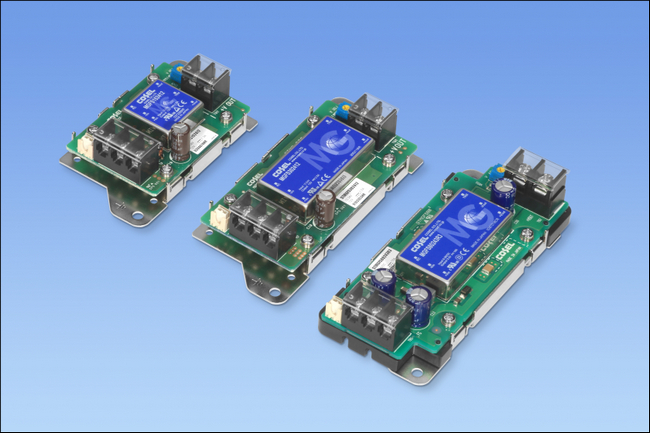
Optimized for convection cooling, the power supplies can be operated within an ambient temperature range of -20 to +70 degrees centigrade. Depending on the assembly method and ventilation levels across the final equipment, a derating may apply as specified in the technical documentation.
The STMGFS80 series includes overvoltage and overcurrent protection. In the case of overcurrent exceeding 105% rating, the module operates in hiccup mode and automatically recovers when the output current returns to normal.
For safety and galvanic isolation, the STMGFS80 series has 1,500VDC Input and RC to Output, 1,000VDC Input and RC to FG and 1,000 VDC Output to FG.
STMGFS80 can be assembled directly to a customer’s equipment chassis by fixing the base plate using the two mounting holes. It can also be clipped to a DIN rail chassis by ordering the option (N2). Additional options e.g., plastic cover (N1) or combined DIN and cover (N3) will be available early Q2-2022
Open frame type, the STMGFS80 series measures 52 x 29 x 117mm (2.05 x 1.14 x 4.61 inches) and weighs 170g max.
The STMGFS80 complements the 15W STMGFS15 and the 30W STMGFS30, offering a wide range of options and possibilities to systems designers. To simplify system upgrades, the STMGFS80 fits in the same footprint as the STMGFS30.
The STMGFS80 series has a five-year warranty and conforms to the European RoHS, REACH and Low Voltage Directives.
Chevron, Mercuria Announce CNG Fueling Network Joint Venture
Chevron U.S.A. Inc., a subsidiary of Chevron Corporation (NYSE: CVX), announced today the signing of definitive agreements to form a joint venture with Mercuria Energy Trading (Mercuria), one of the world’s largest integrated energy and commodities companies, to own and operate American Natural Gas LLC (ANG) and its network of 60 compressed natural gas (CNG) stations across the United States.
Chevron is building a large-scale, vertically integrated renewable natural gas business in the United States. Through its partnerships with Brightmark and California Bioenergy, Chevron is developing projects to produce renewable natural gas from dairy digesters across the country. The creation of this joint venture will allow Chevron to rapidly grow its renewable natural gas value chain, complementing its previously announced plan to open more than 30 Chevron-branded CNG stations by 2025.
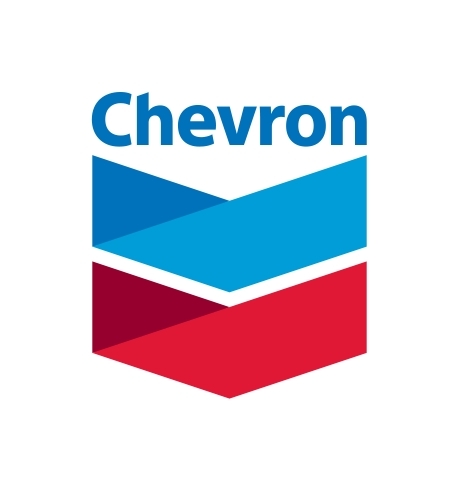 “Chevron is committed to producing a tenfold increase in renewable natural gas volumes by 2025 compared to 2020 as part of our higher returns, lower carbon strategy,” said Andy Walz, Chevron’s president of Americas Fuels & Lubricants. “This acquisition will advance our renewable natural gas business in support of customers who want to reduce their carbon footprint.”
“Chevron is committed to producing a tenfold increase in renewable natural gas volumes by 2025 compared to 2020 as part of our higher returns, lower carbon strategy,” said Andy Walz, Chevron’s president of Americas Fuels & Lubricants. “This acquisition will advance our renewable natural gas business in support of customers who want to reduce their carbon footprint.”
“Mercuria is pleased to partner with Chevron and ANG founder Andrew West in growing ANG’s fueling network and continuing to provide a best-in-class decarbonization solution to the medium- and heavy-duty vehicle market,” said Chief Investment Officer Brian A. Falik. “Chevron’s excellent reputation of customer service, and their like-minded commitment to investment in the energy transition, make them the perfect partner to expand the ANG footprint.”
The transaction is subject to customary closing conditions.
About Chevron
Chevron is one of the world’s leading integrated energy companies. We believe affordable, reliable and ever-cleaner energy is essential to achieving a more prosperous and sustainable world. Chevron produces crude oil and natural gas; manufactures transportation fuels, lubricants, petrochemicals and additives; and develops technologies that enhance our business and the industry. To advance a lower-carbon future, we are focused on cost efficiently lowering our carbon intensity, increasing renewables and offsets in support of our business, and investing in low-carbon technologies that enable commercial solutions. More information about Chevron is available at www.chevron.com.
About Mercuria
Founded in 2004, Mercuria is one of the largest independent energy and commodity groups in the world. As an integrated group, Mercuria is present all along the commodity value chain with activities forming a balanced combination of trading flows, strategic assets and structuring solutions. With more than USD 100 billion in turnover, Mercuria has become one of the most active players in the energy and renewables markets. Over the next five years, the company will direct half of its investment towards the energy transition. For more information, visit www.mercuria.com.
Venezuela’s heavy oil project reserves will be left stranded as international players divest their interest, says GlobalData
Two international oil and gas players in Venezuela, TotalEnergies and Equinor, recently divested their respective 30.32% and 9.67% interest in the largest project, Petrocedeno, to the state-owned Petróleos de Venezuela S.A (PDVSA) company. According to GlobalData, this means that due to high risks and the unstable deteriorating economy in the country, international players no longer see an upside in Venezuelan projects. The leading data and analytics company notes that with less investments supplied from the private sector, Venezuela will not be able to sustain its oil and gas industry for long, as its own cash resources are extremely limited.
Svetlana Doh, Upstream Oil & Gas Analyst at GlobalData, comments: “Petrocedeno is a critical project in Venezuela’s portfolio and the largest upgrader in the country with a capacity to process over 200,000 barrels of heavy crude oil per day (bd). In the past few years, Venezuela faced severe fuel shortages, and this year, in a desperate attempt to solve this problem, the Petrocedeno upgrader is planned to be re-designed to produce naphta as a feedstock for refineries. This essentially means that refineries in the country are in such a desperate need for renovation or even simple upkeep, that now upgraders have to perform a refining step for them.”
 Most of the refineries built in Venezuela were designed to process medium to light crudes, which are in very low stock in the country and are also used as a diluent to produce exportable grades.
Most of the refineries built in Venezuela were designed to process medium to light crudes, which are in very low stock in the country and are also used as a diluent to produce exportable grades.
Doh continues: “The conversion of the upgraders could be very challenging, as it would require new equipment, while cash-strapped PDVSA can barely find the funds to conduct an elementary maintenance of its refineries. The continuous drop of crude oil production in Venezuela, which is a main pillar of the country’s economy, combined with sanctions imposed by the US Government, the COVID-19 pandemic, corruption in the government and lack of investment led the country to collapse. Annual oil production in Venezuela declined from an estimated 2.03 million barrels per day (mmbd) in 2017 to a shockingly low 0.48 mmbd in 2020.”
Despite the fact that TotalEnergies and Equinor stated that their decision to divest their interest was to prioritize high-return assets in their portfolios, both companies’ decision to pursue their low carbon strategy instead, which is incompatible with heavy crude oil production in Venezuela, is technically a risky conversion of the upgrader and could be a trigger to significantly reduce their presence in the country. There is also a clear strategy for these two companies in reducing their exposure to high carbon emitting assets, and heavy crude oil is a very energy intensive upstream process; this, combined with the overall above-ground risk in Venezuela, makes the exit decision a consequent decision.
Doh continues: “Currently, the primary international partners and investors of PDVSA are Chinese and Russian companies, which have invested the most in the Venezuelan oil and gas sector during recent years.”
About GlobalData
4,000 of the world’s largest companies, including over 70% of FTSE 100 and 60% of Fortune 100 companies, make more timely and better business decisions thanks to GlobalData’s unique data, expert analysis and innovative solutions, all in one platform. GlobalData’s mission is to help our clients decode the future to be more successful and innovative across a range of industries, including the healthcare, consumer, retail, financial, technology and professional services sectors.
ABB and MEDATech sign agreement to explore technologies for net zero emissions of heavy industrial machinery in mining
ABB has signed a Memorandum of Understanding (MoU) with MEDATech to jointly explore solutions to decarbonize mining operations through charging solutions and optimized electric drive systems in battery electric vehicles (BEVs) for heavy-duty applications. The two companies will share expertise and collaborate in bringing solutions to market that will reduce the greenhouse gas (GHG) emissions associated with heavy machinery in mining.
- Memorandum of Understanding (MOU) is the latest signed by ABB as it extends collaboration with original equipment manufacturers (OEMs) and technology innovators to develop electric vehicle solutions and compatible charging infrastructure solutions
- The agreement aligns with commitments made with ABB Ability™ eMine, a purposeful approach, method and integrated portfolio of electrification and digital systems designed to accelerate the decarbonization of the mining sector
- MEDATech, which consults on, designs and builds custom mobile heavy equipment, will work with technology provider ABB to find innovative solutions to accelerate the transition to all-electric mines
Mining customers require solutions specifically designed for heavy industries to enable the electrification of their fleets and facilitate the transition to net zero emission transport across mining operations. Electric vehicles and matching charging infrastructure solutions must meet demanding requirements, including high power, automated and safe operation, ruggedized designs fit for harsh environmental conditions and approved standards.
“We are very excited to be working with ABB in this new and dynamic field of electric vehicles and will bring our advanced drive train technology to the forefront alongside ABB’s advanced charging technology,” said Rob Rennie, Founder and President of MEDATech. “Collaborating to accelerate the adoption to emission-free transport systems enabling cleaner operations is truly at the heart of our company.”
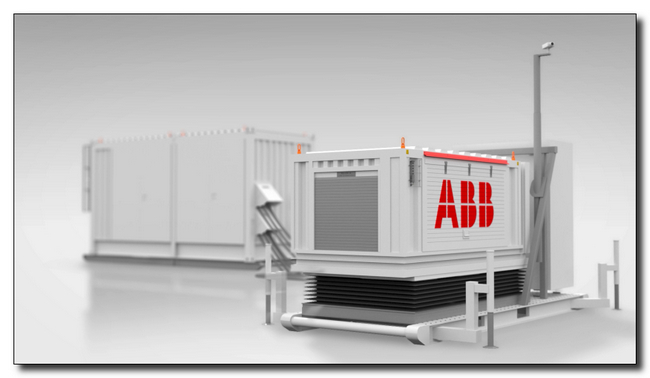 ABB Ability™ eMine FastCharge, which has been unveiled in pilot phase
ABB Ability™ eMine FastCharge, which has been unveiled in pilot phase
Technology provider ABB and MEDATech bring complementary expertise to designing and building electric heavy mobile equipment. The collaboration could involve exploring further development and possible technologies for high power and automated charging and connector systems to facilitate the adoption of BEVs in industries with heavy machinery.
The collaboration with MEDATech, which largely works across the mining, construction and energy sectors, is the latest in a series that ABB is developing with OEMs and technology innovators to accelerate the transition to all-electric mines.
“Within the ABB Ability™ eMine framework, ABB is increasingly working with OEMs and technology innovators to fast-track the development of new emissions-reducing systems through the electrification and automation of the whole mining operation. Strategic collaborations, such as with MEDATech, provide solutions that support responsible mining operations,” said Mehrzad Ashnagaran, ABB’s Global Product Line Manager Electrification & Composite Plant. “The aim of our combined solutions is to enhance the efficiency and flexibility of customer businesses, contribute to the reduction of CO₂ and the realization of a sustainable society.”
“The mining sector has set clear and ambitious targets to decarbonize operations for a more sustainable future,” said Nic Beutler, ABB’s Global Product Manager Power System & Charging Solutions. “To meet or even exceed productivity targets while not compromising on safety, new thinking and technological solutions are required. ABB and MEDATech are an ideal match for exploring the steps needed to reach net zero emissions for heavy-duty industrial machinery.”

ABB recently launched ABB Ability™ eMine, a purposeful approach, method and integrated portfolio of electrification and digital systems designed to accelerate the decarbonization of the mining sector. The agreement with MEDATech will complement ABB’s engineering and technology expertise onboard and offboard mining vehicles and allow for much needed and lasting solutions for the industry.
MEDATech provides highly-efficient drive train technology to OEMs and end users while consulting and developing optimization tools to realize the efficient and cost-effective implementation of electric fleets. It is located in Ontario, Canada, and has built extensive know-how and expertise in designing, building and testing of prototype systems and vehicles since 2003. It launched the world’s first commercially available 100 percent electric mining haul truck, the Western Star 4900XD, which has ultra-fast charging capability, accepting a charge power of 600kW. With ABB’s charging capability matching the charging cycles to the production, charging times of less than 15 min can be achieved. Fast charging is a critical part of battery-electric technology viability for industrial fleets, which operate 24/7.
With over 130 years of experience in the mining industry, ABB designs fit-for-purpose solutions that can electrify all mining equipment, from pit to port and mine to market. They are backed by ABB’s decades of real-world experience in electrifying, automating and digitally connecting mine equipment and operations.
ABB Ability™ MineOptimize is a digitalized portfolio, providing complete electrification, automation and digital solutions, industry-specific products and lifecycle services across every stage of the mining cycle, already improving the energy efficiency as well as productivity and optimization of CAPEX and OPEX of open pit and underground mines worldwide. ABB’s digital applications draw on advanced libraries and software solutions to reduce process complexity and can integrate with existing equipment and technology.
ABB (ABBN: SIX Swiss Ex) is a leading global technology company that energizes the transformation of society and industry to achieve a more productive, sustainable future. By connecting software to its electrification, robotics, automation and motion portfolio, ABB pushes the boundaries of technology to drive performance to new levels. With a history of excellence stretching back more than 130 years, ABB’s success is driven by about 105,000 talented employees in over 100 countries.
ABB’s Process Automation business is a leader in automation, electrification and digitalization for the process and hybrid industries. We serve our customers with a broad portfolio of products, systems, and end-to-end solutions, including our # 1 distributed control system, software, and lifecycle services, industry-specific products as well as measurement and analytics, marine and turbocharging offerings. As the global #2 in the market, we build on our deep domain expertise, diverse team and global footprint, and are dedicated to helping our customers increase competitiveness, improve their return on investment and run safe, smart, and sustainable operations. go.abb/processautomation
Q.E.D Announces Precision Liquid Level Reader for Gas Well Applications
PLR device determines leachate and/or condensate levels accurately, safelyand efficiently without the need to break the wells’ vacuum seal
Q.E.D. Environmental Systems, Inc., a leading manufacturer of innovative environmental products and subsidiary of Graco Inc (NYSE: GGG)., announces the release of the Precision Level Reader (PLR), which is a very accurate, safe and efficient method for determining leachate and/or condensate levels in gas wells.
With QED’s new PLR device, liquid levels are detected within seconds and are recorded with a time, date and location stamp with no need to interrupt the vacuum in the well. Using a permanently installed weight and tube, the PLR engages a micro-compressor and differential sensors to determine a water level reading that is never affected by foam and will not cross-contaminate from well to well.
The PLR device delivers key advantages over other liquid level measurement devices for gas well applications. With no need for a water tape or well seal removal, level readings take a fraction of the time and effort, with no exposure of technicians to dangerous gases or liquids in the process. Levels are taken with the well vacuum intact, meaning no errors occur due to foam in the well or vacuum losses. With average level readings taking only seconds, operators see immediate and long-term labor savings. All readings are displayed immediately and stored electronically for future access.

Proven industry-standard materials and manufacturing techniques in the QED PLR device ensure a high quality, durable product. The PLR system consists of three components: the Remote Measurement System (RMS), a handheld portable PC and handset software. An IP65 ABS enclosure houses the air pump, battery, pressure sensor and interface circuits in the RMS. The associated rugged handheld unit features integrated Bluetooth, a Windows 10-based operating system, and a minimum of 64MB RAM and 256MB Flash memory. Finally, the customized interface application software features a user-friendly digital display with audible and visual alerts. The software offers simple data recording and storage options, with the option to display results in either imperial or metric measurements.
For more information on the Prevision Level Reader, visit www.qedenv.com.
About Q.E.D. Environmental Systems, Inc.
Q.E.D. Environmental Systems, a subsidiary of Graco Inc., is a leading manufacturer of innovative environmental pumping systems, landfill products, landfill gas products, and air strippers for use at landfills, mines, oil refineries and other industrial sites, as well as hazardous waste cleanup sites. Our products are used around the world for a wide range of environmental applications, including groundwater sampling, groundwater remediation pumping, landfill leachate and condensate pumping, landfill gas collection and control, landfill and biogas analysis, air stripping and VOC removal, and wireless data acquisition. Based in Dexter, MI, QED serves customers from support centers in Michigan, and England. For more information, call 734-995-2547 or contact us at This email address is being protected from spambots. You need JavaScript enabled to view it.
Trinidad and Tobago to dominate natural gas production from upcoming projects in Americas in 2025, says GlobalData
Trinidad and Tobago is expected to contribute around 25% or 820 million cubic feet per day (mmcfd) of the Americas natural gas production in 2025 from planned and announced projects (new build projects, excluding the US L48), according to GlobalData, a leading data and analytics company.
The company’s report, ‘Americas Oil and Gas Upstream Development Outlook to 2025’, reveals that 514 mmcfd of natural gas production in Trinidad and Tobago in 2025 is expected from planned projects with identified development plans, while 306 mmcfd is expected from early-stage announced projects that are undergoing conceptual studies and are expected to be granted approval for development.
A total of seven natural gas projects are expected to start operations in Trinidad and Tobago during 2021-2025. Of these, Colibri and Matapal are some of the key projects that are expected to collectively contribute around 58% of the natural gas production in the country in 2025.
Svetlana Doh, Oil & Gas Analyst at GlobalData, comments: “Despite quite a positive outlook for the country’s production in the near term, GlobalData projects that natural gas output in Trinidad and Tobago will start declining after 2024. Since most of the developed and undeveloped shallow water blocks are already licensed, more aggressive exploration work needs to be conducted regarding deepwater acreage. The country offered some deepwater blocks in the 2020 deepwater competitive bid round, but the round was delayed until 2021. Further delays could be expected due to the sudden death of Trinidad and Tobago’s energy minister in April 2021.”
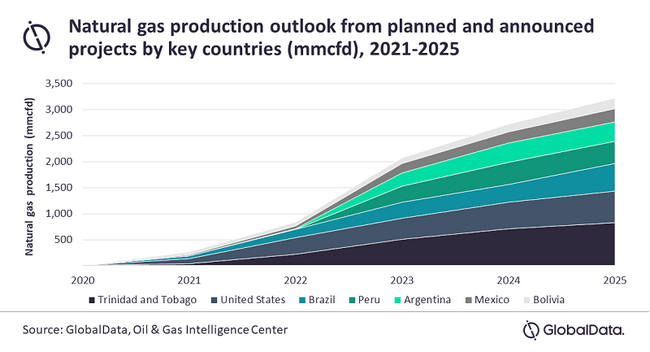
GlobalData identifies the US as the second highest country in the Americas with 608 mmcfd of natural gas production in 2025 or around 18% of the total Americas natural gas production in the year (excluding the US L48). Brazil follows with natural gas production of 538 mmcfd from planned and announced projects in 2025.
Among oil and gas companies, BP, China National Petroleum, and Petroleo Brasileiro SA lead with the highest natural gas production of 421 mmcfd, 412 mmcfd and 387 mmcfd respectively, in 2025 from planned and announced projects (excluding the US L48).
- Comments provided by Svetlana Doh, Oil & Gas Analyst at GlobalData
- Information based on GlobalData’s report: Americas Oil and Gas Upstream Development Outlook to 2025
- Announced/Planned: Denotes only new build assets that are in different stages of development and have not started commercial operations
- Planned: Denotes greenfield projects that have received final investment decision (FID) from equity-holding companies to develop/build/construct it.
- Announced: Denotes projects that are undergoing conceptual studies/pre-FEED or moving into FEED/FDP or are likely to target FID.
- This report was built using data and information sourced from proprietary databases, primary and secondary research, and in-house analysis conducted by GlobalData’s team of industry experts.
About GlobalData
4,000 of the world’s largest companies, including over 70% of FTSE 100 and 60% of Fortune 100 companies, make more timely and better business decisions thanks to GlobalData’s unique data, expert analysis, and innovative solutions, all in one platform. GlobalData’s mission is to help our clients decode the future to be more successful and innovative across a range of industries, including the healthcare, consumer, retail, technology, energy, financial and professional services sectors.
Alfa Laval partners with Wayout to develop micro-factories for sustainable water and beverage supply
Alfa Laval has signed a partner agreement with Wayout International, a Swedish innovation company, to develop micro-factories for local and sustainable production of water and other beverages. The micro-factories will use Alfa Laval technology and be built at the company’s site in Copenhagen, Denmark. The agreement covers the production of up to 100 micro-factories, and the partnership starts in 2022.
Today more than 2 billion people lack access to clean drinking water. Wayout's micro-factories can treat all types of water and remineralize it to produce high quality drinking water. The fully automated plug-and-play system is powered by solar panels. Producing water locally addresses the challenges of bottling, logistics, and distribution, and reduces the generation of plastic waste.
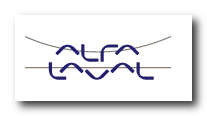 The partner agreement includes the production of two different micro-factory concepts: one for drinking water and another for brewed beverages.
The partner agreement includes the production of two different micro-factory concepts: one for drinking water and another for brewed beverages.
“This partnership combines Alfa Laval’s technological expertise with Wayout’s innovative processes to accelerate sustainable solutions,” says Nish Patel, President of the Food & Water Division. “It addresses a globally important issue – access to safe drinking water – and we are very pleased our technology is part of the solution.”
Did you know … One micro-factory can produce 70,000 litres of drinking water each month, preventing up to 200,000 plastic bottles and 8 tons of carbon dioxide from entering the eco system.
This is Alfa Laval
Alfa Laval is a world leader in heat transfer, centrifugal separation and fluid handling, and is active in the areas of Energy, Marine, and Food & Water, offering its expertise, products, and service to a wide range of industries in some 100 countries. The company is committed to optimizing processes, creating responsible growth, and driving progress to support customers in achieving their business goals and sustainability targets.
Alfa Laval’s innovative technologies are dedicated to purifying, refining, and reusing materials, promoting more responsible use of natural resources. They contribute to improved energy efficiency and heat recovery, better water treatment, and reduced emissions. Thereby, Alfa Laval is not only accelerating success for its customers, but also for people and the planet. Making the world better, every day.
Alfa Laval has 16,700 employees. Annual sales in 2020 were SEK 41.5 billion (approx. EUR 4 billion). The company is listed on Nasdaq Stockholm.
About Wayout
Wayout was founded in Stockholm in 2018 by a group of entrepreneurs within process engineering, IT/IoT, and tech innovation. Their micro-factories are offered to organizations and entrepreneurs that see the opportunities in locally producing beverages with a minimal eco-footprint.
Konecranes wins 14-crane order from thyssenkrupp Marine Systems for Kiel shipyard
Konecranes has won an order from the thyssenkrupp Marine Systems shipyard to supply 14 process cranes for a shipbuilding hall now being built in Kiel, Germany. The order was booked in July 2021.
The double-girder crane systems, which will be built by Konecranes’ Demag Cranes & Components unit, will be installed in the new production halls in Kiel, which is being developed into an international center of excellence for submarine production. The cranes will have been manufactured, delivered and commissioned by the time work begins in 2023.
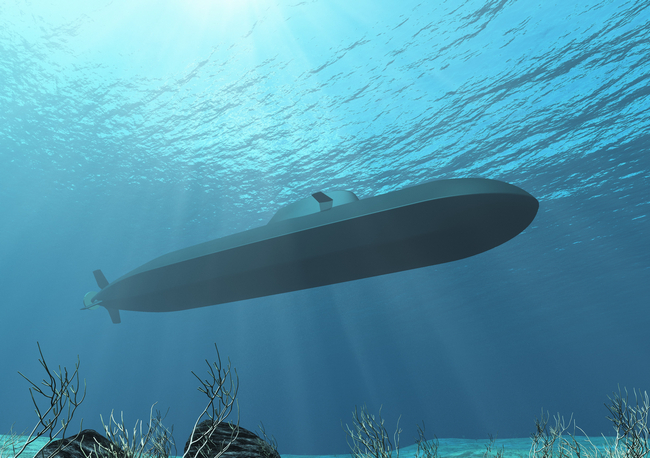
The cranes will come with numerous features to increase performance, service life and, in particular, precision. These include optimized rope lead-off on the hoists (to extend the service life of the hoist ropes), extended monitoring of the hoist brake (to improve safety), electronic overload protection with a load spectrum recorder (to determine the remaining service life of the hoists) and 24/7 online support.
Thomas Bönker, Senior Vice President for Process Cranes at Konecranes, said: “This is a demanding project, with the high travel and positioning accuracy of the cranes required, for example, when two submarine segments weighing over 100 t each have to be precisely positioned by two cranes and four travelling hoist units to assemble the hull. We are pleased to support thyssenkrupp Marine Systems with our process crane technology for this exciting and forward-looking project.”
A strong focus on customers and commitment to business growth and continuous improvement make Konecranes a lifting industry leader. This is underpinned by investments in digitalization and technology, plus our work to make material flows more efficient with solutions that decarbonize the economy and advance circularity.
Konecranes is a world-leading group of Lifting Businesses™, serving a broad range of customers, including manufacturing and process industries, shipyards, ports and terminals. Konecranes provides productivity enhancing lifting solutions as well as services for lifting equipment of all makes. In 2020, Group sales totaled EUR 3.2 billion. The Group has around 16,500 employees in 50 countries. Konecranes shares are listed on the Nasdaq Helsinki (symbol: KCR).
How to make silicone sustainable and safer for the food processing industry
Silicone is a little like concrete. Both are taken for granted, and the world as we know it would be hard to imagine without either. And while concrete keeps a building standing, so silicone (or more specifically, silicone extrusions) help to keep the machinery within that building functioning. But unless you’re working directly with both, they can be easy to overlook.
The food processing industry is no exception to this rule, and many different grades of (FDA-approved) silicone cords, strips, gaskets, tubes and profiles are all necessary for functioning food production lines. And silicone, with its many advantages over other competitive materials, now makes up one of the most dominant types of rubber extrusions used in food processing and production.
Yet advantages have brought complacency in the industry around what to do with silicone once we’ve had our use from it.
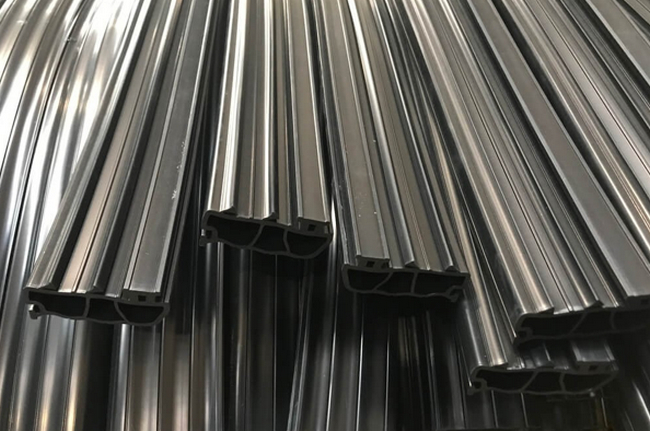
Recycling and silicone
Silicone is not recycled enough after use. This is actually down to a lot of varied factors; some of them complex. But the main reason is that it is difficult to recycle because it is hard to break down.
In some ways, silicone’s resistance to biodegradability is a good thing. It does not fragment into microplastics, and it doesn’t react with other chemicals in the Earth. All this limits how much it can spread through the environment, preventing ecological harm.
This, I believe, is the reason behind our lackadaisical response to recycling silicone. After all, it just kind of sits around. There is no urgency to deal with it like there is with plastic. But silicone use is increasing across all industries, and especially in food processing — so this complacency cannot go on forever.
Now, there are some companies operating today that do work to recycle silicone, but there are by no means a lot. This may be due to the costs incurred in breaking it down, and also due to a lack of resources. (After all, if no one is looking to recycle in the first place, then these companies won’t be getting the supplies they need to remain functioning).
The current best method to break silicone down includes cutting it into small pieces and then placing it in a high-temperature, high saline environment. In such a culture, chemical reactions will begin to undo silicone’s molecular bonds. There are other ways to ‘recycle’ silicone that also make good short-term methods (and are much easier to do). For example, shredded silicone can be repurposed and reused to make rubber mats.
The market is there and the environmental impetus is certainly there. But while silicone is tough, nothing lasts forever and after 500 years it will start to disintegrate. So, our current ways of thinking, and pan-industrial attitudes need to change. I have heard, anecdotally, that recycling requires strenuous effort, and for silicone to be carted off by the “tonne-load”. Poor attitudes like this are unhelpful, but I am confident if we implement a wider strategy of networking and accessibility, to make the recycling process cheaper and easier, then we will be able to turn things around rapidly.

Silicone, safety and siloxanes
Silicone use in food processing is growing. There are several reasons for this, including cost-effectiveness and practicality. But a key reason is because FDA-grade silicone has long been understood to be very safe.
Not everyone is convinced, however. Critics fear so-called “siloxanes”, which are trace elements of silicone that can crossover into food — and this crossover may increase in food that is naturally high in fats. It’s worth noting that these fears are only really apparent when it comes to silicone-food packaging, and not with the silicone that is used in the actual process of food production itself.
But nevertheless, if people are concerned, we need to listen to their concerns. As of right now the biggest area of concern are cyclic type siloxanes. These are odourless, colourless, and are sometimes purposely added into our face creams and moisturisers. The evidence that they are harmful to human health is lacking, but nevertheless some people worry that if we are exposed to enough then crossover levels could pass what’s known as the “1000 Dalton limit” — in which the traces could make it inside the human stomach.
The reaction has been such that the ECHA (European Chemicals Agency) and REACH (European Registration, Evaluation, Authorisation and Restriction of Chemicals) have decided to limit three types of silicone — D4, D5 and D6 respectively, and to even try to ban them altogether. Because the research is not at all clear, it’s no surprise that the Global Silicones Council has launched a campaign against the EU to try to overturn these limitations.
So, given that the academic jury is still out on whether silicone is harmful to health or not, what can be done in the meantime to relieve everybody’s anxieties? We could start by intensifying the silicone curing process. A study by the Technical University of Denmark found that, with more intense curing, less siloxanes were found to crossover out of the material. “Curing” is the process of turning silicone from a liquid into a solid. To me, a combination of intense curing, along with better and more transparent regulatory standards, could go a long way to appeasing those with concerns and snuffing out siloxane crossover.
In the meantime, however disruptive, the EU’s restrictions on silicone D4, D5 and D6 could be a good thing. With increased siloxane monitoring, it could be just the stimulus the industry needs to find alternatives that truly are safer for us and the planet.
Conclusion
Thanks to its practical uses and numerous benefits, silicone usage is here to stay. It’s important to remember that silicone has great benefits. For example, it has been estimated that for every tonne of carbon dioxide used in the manufacturing process, its application in the long run ends up saving about nine tonnes over time. It is an important material for future development.
So, we need to put to bed once and for all everybody’s environmental and health concerns. This, I believe, isn’t that difficult to do. We just collectively need to pull together, to create a culture where recycling is encouraged and easier, and to argue for more transparency and accountability.
Author: Matthew Bishop, operations manager
European Commission backs floating tidal energy project with Orbital and SKF
The innovative Scottish technology developer, Orbital Marine Power (Orbital) will lead a pan-European consortium to deliver the €26.7m FORWARD-2030 project, set up to accelerate the commercial deployment of floating tidal energy, with SKF as a key partner.

The project will see the installation of the next iteration of the Orbital turbine, integrated with a hydrogen production facility and battery storage at the European Marine Energy Centre (EMEC) in Orkney. Project partners will design options for integrating largescale tidal power into future net zero energy systems, whilst developing environmental monitoring and marine spatial planning tools for large floating tidal arrays.
Orbital will act as project coordinator as well as lead technology developer for the FORWARD-2030 project.

During the project, Orbital will advance the company’s pioneering floating tidal turbine design, with support from technical partner SKF, who will design and build an optimised fully integrated power train solution, designed for volume manufacture. The partners deliver several technical innovations targeting increased rated power, enhanced turbine performance and array integration solutions. These innovations will reduce the cost of Orbital’s sector-leading technology even further. The next generation turbine will be deployed at EMEC’s Fall of Warness site off Orkney, where the company has already installed the O2, the world’s most powerful floating turbine, this summer. Once installed next to the O2, the new turbine will be part of the world’s most powerful floating tidal array.
EMEC will host the demonstration, facilitate hydrogen production, deliver a comprehensive environmental monitoring programme, and develop a live environmental monitoring system and test programme. LABORELEC will assess large scale integration of tidal energy to the European energy system; develop a smart energy management system and an operational forecasting tool. The University of Edinburgh will deliver techno-economic analysis of tidal energy; and the MaREI Centre at University College Cork, will be responsible for addressing marine spatial planning issues for wide scale uptake of tidal energy.

Michael Baumann, Business Development Manager, Marine and Ocean Energy at SKF said, “We are enthused and excited about the opportunities presented by the funding from the European Commission for this project. We are proud to be part of this exciting journey with Orbital, developing technology and providing integrated power train solutions for environmentally friendly tidal power. FORWARD 2030 will be a great steppingstone in demonstrating commercial and technical competitiveness of tidal energy and is ultimately set out to provide technology readiness for serial production.”
Commenting on the contract, Oliver Wragg, Orbital’s Commercial Director said:
“This endorsement of the Orbital technology by the European Commission is a huge vote of confidence in our capability to deliver commercially viable tidal energy. We now have a focused and highly experienced consortium dedicated to the delivery of tidal energy and committed to accelerating its future uptake. This alignment of interest sets FORWARD-2030 on course to have a meaningful impact as we build towards large scale commercially viable tidal energy projects.”
SKF’s mission is to be the undisputed leader in the bearing business. We do this by offering solutions that reduce friction and CO2 emissions, whilst at the same time increasing machine uptime and performance. Our products and services around the rotating shaft, include bearings, seals, lubrication management, artificial intelligence and wireless condition monitoring. SKF is represented in more than 130 countries and has around 17,000 distributor locations worldwide. Annual sales in 2020 were SEK 74 852 million and the number of employees was 40,963. www.skf.com
® SKF is a registered trademark of the SKF Group.
